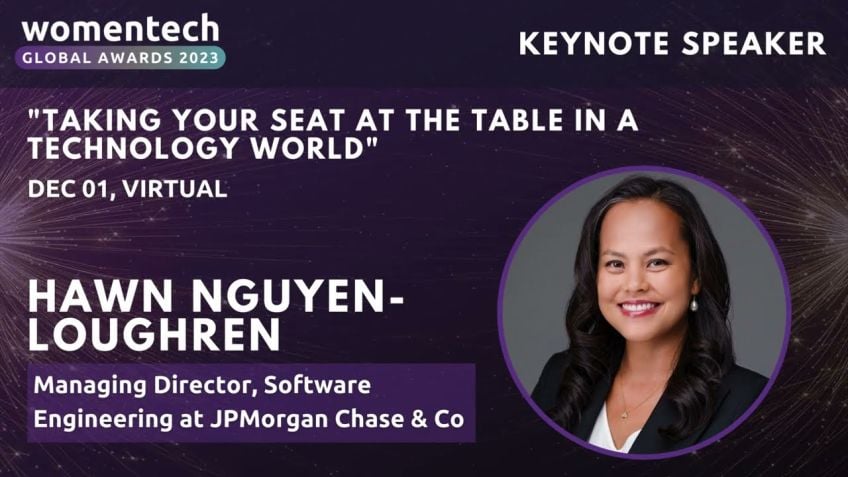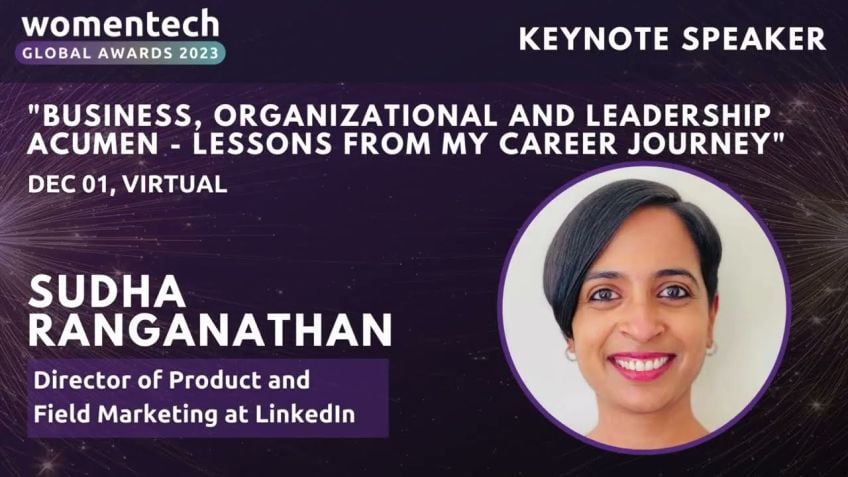Unlocking Your Team’s Potential by Angela Shaw
Unlocking Your Team's Potential with Angela Shaw: Discover the Secrets to Success in the Global IT Legal Services
Are you a leader looking to unlock the potential of your team? Angela Shaw, the IT Senior Associate Director for the Global IT Legal Services Team at Beringer Ingelheim, has amassed plenty of insights from her 21-year career experience (nine of which are specifically within IT) with this leading pharmaceutical company.
About Beringer Ingelheim
Established in 1885, Beringer Ingelheim is a globally recognized pharmaceutical company counted among the world's leading producers. This family-owned business headquartered in Ingelheim, Germany, focuses primarily on three areas: human pharma, animal health, and biopharmaceutical contract manufacturing. Boasting a global workforce of over 52,000 employees, Beringer Ingelheim takes pride in being a patient-centric organization that aims to improve the lives of humans and animals alike.
Why Stay 21 Years in Beringer Ingelheim?
In this resume, the question arises—why has Angela Shaw chosen to stick with Beringer Ingelheim for such an extended period? Angela provides a two-part answer to this. Firstly, Beringer Ingelheim offered her opportunities to drive her career development significantly. Secondly, she was motivated by knowing that her daily work contributes to a broader mission of bettering lives, irrespective of her role in the IT department.
The Pursuit of Passion in IT Career
Taking us way back to her high school years, Angela highlighted a pivotal conversation with her guidance counselor who advised her against her desire to pursue computer technology, insinuating that she would find herself flipping burgers her whole life. Fast forward to this decade, Angela realized that she wanted more passion in her career and identified her underlying passion—being a computer nerd.
The Secret to Unlocking Your Team's Potential
Motivation and Drive
Sharing her insights on unearthing your team's potential, Angela emphasized that the secret lies in having a team that possesses both motivation and drive towards common goals. Cambridge Dictionary defines motivation as the willingness to do something, while drive refers to a planned effort to achieve something. Let's dissect these concepts more through Angela's practical tips.
Angela's Tips to Motivate and Drive Your Team towards Success
- Ensure Alignment with Strategic Goals: Ensuring your team understands the strategic goals is crucial in maintaining direction and reducing aimless wandering. Angela recommends making goal planning a team event. She also stresses the importance of concerted monthly roundtable discussions and an annual review to assess progress, celebrate accomplishments, provide clarity and ensure the team is aligned with the company’s strategic goals.
- Invest in Employee Development: This takes various forms for Angela's team, including IT knowledge hours, focused development exercises, and preparing teams for the future needs of the organization. By keeping employees informed about the latest in their respective areas and conducting relevant, non-technical talks, the team remains ready for any future changes.
- Maintain Motivation through Flexibility and Diversity: Angela shared the importance of having a flexible and diverse team to keep motivation levels high. This involves cultivating a team that can adjust to varying business needs and encouraging them to take on tasks outside of their core job. Beringer Ingelheim fosters such flexibility and diversity through programs like Women in IT, dedicated to mentoring and building female IT talents.
Angela's practical insights serve as a valuable guide for leaders and managers aiming to unlock their teams' potential and drive them towards success. By maintaining a focus on aligning with strategic goals, fostering employee development, and promoting flexibility and diversity, leaders can motivate their teams and ensure they're fully equipped to thrive in their tasks.
Video Transcription
Let us go ahead and get started as you uh kind of heard already. My name is Angela Shaw, the it senior associate director for the Global IT Legal Services Team at Beringer Ingelheim. I've actually been with Behringer Ingelheim for 21 years.It's just that nine of those years have been specific within it. Two of those years have been specific in my current role to tell you a little bit about uh Berringer Ingelheim. We are a global company and one of the world's uh leading pharmaceutical in companies that exist. Our headquarters as I mentioned are in Germany, but they are in Ingelheim. Uh Germany, we're family owned and were founded in 1885. We have three primary areas of focus, that's human pharma, animal health and biopharmaceutical contract manufacturing. Now, as a global organization, we have over 52,000 employees worldwide.
And within it, we have over 1500 employees with my team. Specifically, I have individuals that are here in the US in Connecticut with me, but then I also have individuals in Argentina and in Germany. So sometimes people have asked me, you know, why have I been with the same company for as long as I have. And my answer is twofold and that is one, I have been able to drive the development of my career throughout the time that I've been here. And two, I know that what I'm doing at the end of the day is making a difference. So it doesn't matter that I work in it because Berger Ingelheim is a patient centric organization and any department is connected to improving the lives of humans and animals. So now that you can answer any basic trivia questions about Benger Ingelheim, let's go with unlocking your team's potential and to flow into this. I'm going to tell you about how I actually got started into it. Um And don't worry, th this is related, we're gonna go back like way back when I was in high school and I was talking to my guidance counselor who you talked to at the, you know, your junior senior year of school. And I was informing them that I want to go to a technical school for computer technology. That was where my desire was. And the guidance counselor actually advised me against this said that if this was my chosen career path, I would find myself flipping burgers my whole life.
That's some interesting feedback. Huh? So I'm going to ask you now what motivates you. So in the chat, in one or two words, I want you to post what motivates you, what gets you going. So give you a moment to do that. I know uh for myself, family is a motivator. I think like it. No, no matter how old we are, we want to make our parents proud. We want our partners to celebrate in our accomplishments. But I wanna hear from you. What is it that motivates you kids? Yes, that's a great one. Thank you so much for sharing, Jamie. It's viha learning new things, team success pride. These are all great learning, personal growth. Absolutely. Thank you so much for sharing. So while you're thinking about these things that motivate you, I now, I now want you to think about the difference between motivation and drive because they actually mean something different. And according to the Cambridge dictionary, motivation is the willingness to do something while drive is a planned effort to achieve something. What does this mean? So again, going back to my hamburger story that I put a pause in, I got that feedback from that guidance counselor and I was motivated, I, you know, I was a teenager. I wanted to prove that Gus guidance counselor that I could go to this technical school.
So I did, I was willing to go to the technical school for computer technology and I succeeded at it, I graduated with honors. But then that's where it ended for me. I don't know why. I don't know if it was self doubt or what, but I actually ended up pursuing a career in a totally different path. I had no planned effort after that point. So I, I was missing that drive that I needed to carry me forward. So now let's fast forward to within this decade. And I reached a point in my career where I realized I wanted to have more passion around what I was doing every day. And so I really had to dig deep on what is this, what gets me going? And I realized I'm a computer nerd at heart. This is where my passion lies. So this time around, I was motivated, I was willing to change my career path, which my career, by the way, the 21 years right at Beringer landed me at Beringer, it was just in a different area, but just as I had the naysayer before I had somebody again influential in my life telling me at this point in my career changing would not be good for me.
I was good at what I was doing and that's what I should stick to. But this time around I was driven, I was going to have a planned effort to not only make sure that I moved into a career of information technology, but that I was successful in doing so. And so I had a development plan, I had step by step actions that I needed to take to get me to that place I wanted to be. And I did that. So now I want to ask you what's the secret for unlocking your team's potential? Well, I'm not gonna wait, make you wait to the end of the presentation to give you that information. I'm going to tell you now, if you haven't figured it out and that is you need team members that have both motivation and drive to be successful. This is how you really unlock your team's potential to get them going to reach your goals. So I'm going to share with you some tips that have worked for me with my team that hopefully then you can embrace and carry forward to yours. And as I'm going through giving examples, if you have something that has worked for your teams, please uh feel free to put it in the chat as well. So tip number one, keep your team members aligned your strategic goals.
Your team members need to have clear direction to where they are going. They shouldn't be wandering around aimlessly. You need to provide them with that drive. So how can you help your employees have a vested interest and clear direction to those goals when you do your goal planning and the steps needed to get there. Don't do this in a silo. Do this as a team event involve your team members where they are determining what is it that I individually need to do? What is it that I as part of the team need to do to make this happen? This helps your employees to really feel drawn and connected to the goals that they have and empowered as they work through that, then have monthly round table discussions around this. I love this. This is something that I do with my team today where it's a monthly pulse check.
How are we doing? What have we accomplished so far? What are we not on target that we need to make adjustments? And then we all are in the same room together where we can motivate and Reprioritize if need be and then likewise have an annual review. So this takes all your monthly round table discussions and puts it together for the end of the year. And I think first and foremost, you should celebrate your team's accomplishments. Your team has worked really hard the past year. So take time, recognize that maybe have each team member share one accomplishment that they are most proud of that year for doing and then go into like a lessons learned exercise. What is it that worked really well that you want to continue to do the next year? What is it that didn't work so well that you need to make adjustments for or maybe even stop doing for that next year and then link all of the work that your team is receiving back to your strategic pillars. I like this for two reasons. One, it helps ensure that all the work that your team is doing is actually stuff they're supposed to be doing, that's gonna help you reach your goals. But then two, it allows your team members to speak intelligently to senior leaders about how they are contributing to the goals of the organization.
So the big takeaway with tip number one is provide the drive to your team, involve your team members and keep the goals constantly in view. So tip number two is focused on employee development. Sure, you've heard this one before. If you make the investment, they're gonna make the investment back to you and then prepare your teams for the future needs of the organization. So, examples of making the investment. One of the things that we do at Beringer Ingelheim, it within it specifically is have these it knowledge hours and this is where IIT department share my new technology, my new process with you another IT department and it's a great opportunity for that knowledge sharing, keeps us all informed on what's the latest for each of our areas.
However, we've found out that we're never having those non technical conversations. So we started these uh streaming sessions that we've labeled no tech talks. The target audience is it? But we wanted people to know that this isn't your average knowledge hour. This is something special and we cover topics such as um volunteering, the importance of networking. Why you should be a mentor, have a mentor. Uh This month, actually, Monday, we're covering empowerment. So it's something that we start every call off with saying this has absolutely nothing to do with technology and everything to do with you. And the feedback on this has been great. Another example is have focused development exercises and conversations with your employees. So again, uh the conversations around development shouldn't only be occurring at the end of the year, but it should be something continuously taking place. Um And you can do development exercises to help with those. We've done a river of life example on my team. Um This is, or I guess it's your river of your career. It's where you draw a picture of your career. What it took you to get there? What boulders did you encounter? What forks in the river did you have to make a decision? And then that's allow that allows employees to take an introspective look to what steps they took to where they wanna go and then how do they get there going forward?
And then as I shared before, prepare your team for the future needs of the organization, things are gonna change. You need to have your team ready for that. So are you upskilling your team members to make sure they have that skill set of the future and that their skill set isn't becoming stagnant tip. Number three, motivating your team, do this by having a flexible and diverse team. And then you wanna make sure that you're keeping your team motivated through change. So, examples of a flexible team, I've built my team to be process and system agnostic. What does that mean? It means that as the business ebbs and flows, my team member can ebb ebb and flow with the organization. If there's a high volume of work in one area, they can all adjust to help with that particular initiative. If somebody is going to be out of the office, then there's somebody able to take care of that item in their place. I like this for business continuity and increased work life balance. Because in this instance, Mary Smith is able who's responsible for system X has a backup and she's able to take time off and completely disconnect and then encourage your team members to take roles or task outside of their core job.
Um This could be within your it team or within other teams as well. I have an example where a coworker of mine uh had a, a non it business partner going on leave and needed somebody to fill in that business process. One of his it team members stepped in there. She had never seen the business process from the business side, talk about a great experience and that all ties back up to the development item we are just talking about and then diversity. Um It is so important to have inclusiveness on your team and diverse thoughts. Each person is bringing their own unique perspective based off of their background, culture experience, et cetera. And to have the most best brainstormed ideas, you need to have this, otherwise you're gonna have groupthink and you're not going to go anywhere. Berger Ingelheim has a culture of respect and empathy and this is shown through our strategic pillars. So for example, one of the things they launched this year was a women in it program where it's focused on mentoring and networking and building that it talent um of women and then keep your team motivated through change. Change is scary. You need to help your team with that. So, as I mentioned before, are you developing your team for the future needs of the organization? Do you provide them with information to be successful in their role to help them with the change?
Are you providing clarity when things are unclear and be as transparent as you're able to be? So those are the three tips that I have for helping to keep your team motivated and driven. And I hope that by embracing those, you'll find the path to be able to do so and truly unlock your team's potential. So I think we have a minute for questions. Um I don't know Katie if we can maybe have one or Yeah, absolutely. Um Thank you for all the questions in the chat. Um The first one I'm seeing is what do you do to get your employees motivated? So maybe here I see one. What do you do to get your employees motivated when they are lacking engagement? So this is a good one. I think it's important to show the, with them, right? What's in it for me? And if you do this, this will hopefully then help them be able to relate better to this. It also goes to tip number one with um wait, what did I say? Provide the drive, right. If they're connected to it, then they'll feel more inclined to do that and then sometimes it's just having those more difficult conversations with their employees to, are they truly engaged?
And is it the right fit? So thank you for that. Ok. And we are at time. So, thank you so much. Um Please, if you have time, uh check out the Berringer Ingelheim meet and greet at 1130 Eastern Standard Time. Um You can also come to one of our uh virtual booths and we could talk then connect with me on linkedin. Thank you greatly.
Thank you, Angela. Thank you for this presentation. Thank you, Katie. Let's thank Angela in the chat. I will share some of your comments. It was a really fantastic presentation and as Angela shared, make sure to stop by Ben Ingelheim booth and say hi. Yeah, absolutely. Angela Katie.
Thank you very much for being with us today. People are thanking you in the chat and connect with uh connect with Angela on linkedin. Say thank you. Thank hi. Thank you once again and stay with us for the rest of the conference. And see you at your booth.
All right, thank you. Bye bye.





